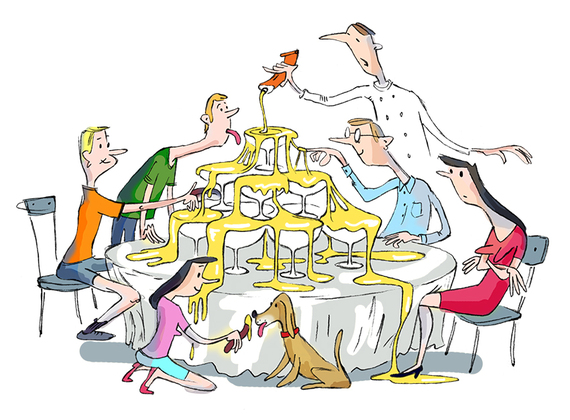When I think about what I miss most about my native country, the short list starts at my kitchen table with two things: fresh-baked Dutch bread and its closest companion, Dutch cheese.
Cheese is a threatened commodity in this country. An American friend told me once with relish how he grew up near a cheese factory. Every day this petrochemical plant spewed thick black stinking clouds across the town. The cheese produced there was eminently adaptable to all purposes and uses. No need for a busy cook to cut slices for a sandwich, fiddling with a knife or cheese slicer. The locally produced Easy Cheese brought consumers a whole new level of convenience. It could be sprayed from a safe distance with an aerosol can. The coating of cheese can be precisely applied on the largest sandwich or smallest piece of toast and then left to dry, rather like a layer of paint. When I examine the ingredients listed on the package, I am relieved to see in the long list of chemical colorings and flavors the name "cheese culture" -- so probably somewhere along the industrial chain a cow or at least some other living creature was involved in its manufacture.
E-Z Cheez is the cousin of another member of the illustrious American cheese family: Cheez Whiz. This oleaginous orange sauce comes in large cans and can be poured over everything in range. Favorite targets include hot dogs, sandwiches and taco chips. The iridescent color is particularly interesting because it is one I usually see on the ominous warning triangles placed on drums of radioactive material and other hazardous wastes. You wonder if, when flavored with bacon or hot peppers, it lights up a Geiger counter.
All these products touch on an essential conundrum of American cheese: What to call it? Because federal laws forbid that such derivative products be sold under the name "cheese." Manufacturers therefore seek refuge with fig-leaf names such as "cheese product" or simply "American slices." The cheese factory does offer many opportunities for imaginative solutions. Once detached from cow or goat, cheese product is adaptable and be given every imaginable color, taste and shape - including given liquid and gaseous forms.
European cheeses are of course available in the big supermarkets; but at the nosebleed prices given to boutique products that are particular to a centuries-old tradition of cheese ripened on a dairy from the farmer's own cows, goats or sheep, a healthy pleasure for everyone.
The simplicity and enjoyment of the cheese sandwich is at the heart of the Dutch character. It gave me great pleasure when a few years ago the then French ambassador in The Hague had to apologize because of a condescending remark he had made about the Dutch lunch with its "cold sandwiches and milk." If you disdain our cheese sandwich, you disdain us all.
Maybe I should do what a Dutch friend of ours did. He moved to the United States and wanted to take something from the Old World. Using the profits from the sale of his Amsterdam house, he bought a 17th century still life. His new apartment in California was sparsely furnished. But his sofa offered a broad view of the wall where he had hung his painting, beautifully lit. What was depicted? A cheese sandwich.
